1. The Iron Lung
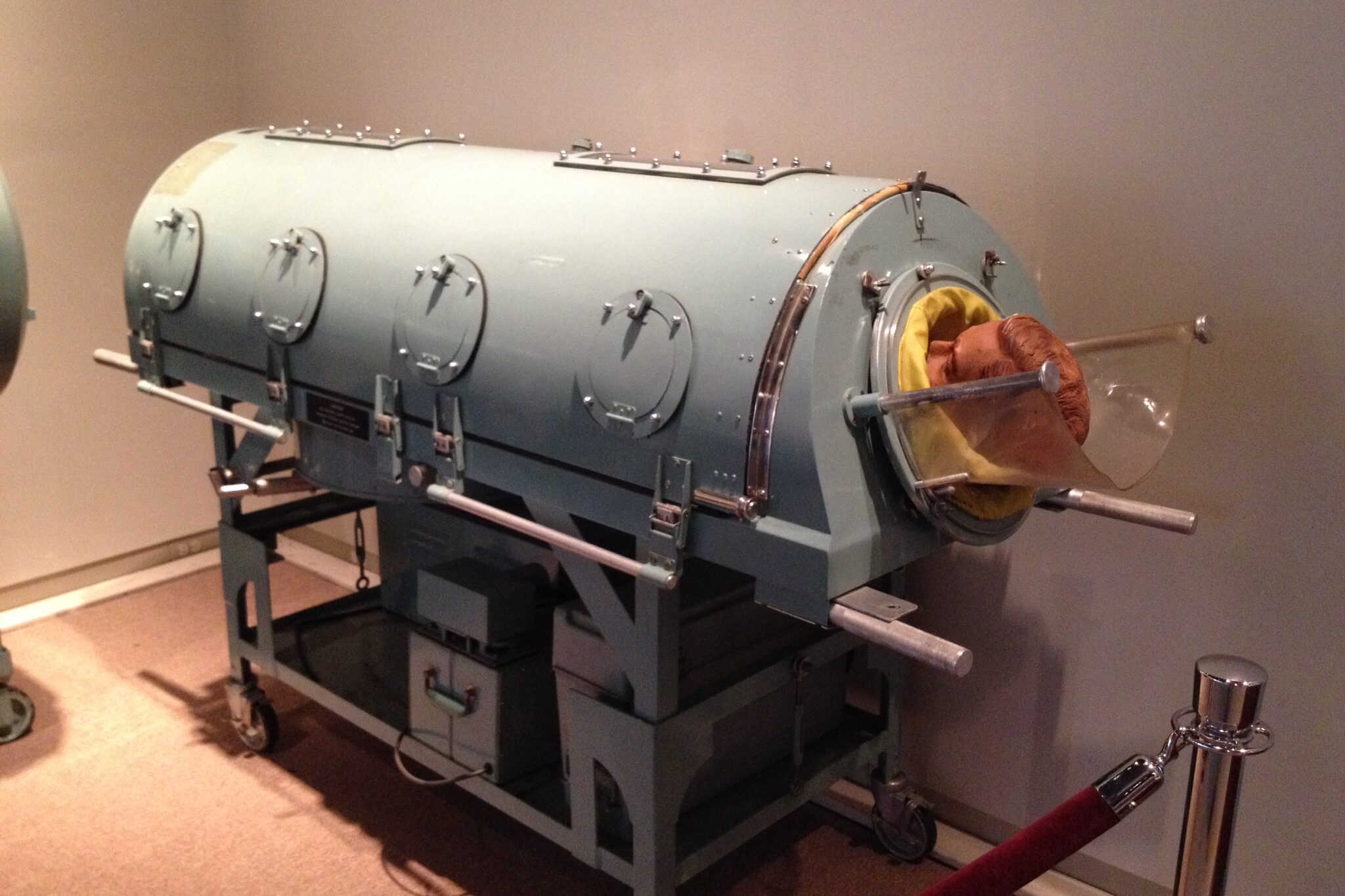
The iron lung was a mechanical respirator used to help polio patients breathe when they were unable to do so on their own. It worked by creating a vacuum around the body, forcing air in and out of the lungs. While it was an incredibly important tool during the polio epidemics, it looks more like a bizarre, claustrophobic capsule from a sci-fi horror film. The patient would be completely enclosed, with only their head sticking out, lying inside for long periods of time.
Imagine spending hours in a steel cylinder with your body helplessly trapped inside, while the machine did all the work. Although it was life-saving for many, the iron lung became a symbol of medical fear. Today, it’s a relic of a forgotten time, one that looks more like something out of a Frankenstein-esque nightmare than a modern medical solution.
2. The Electroshock Therapy Device
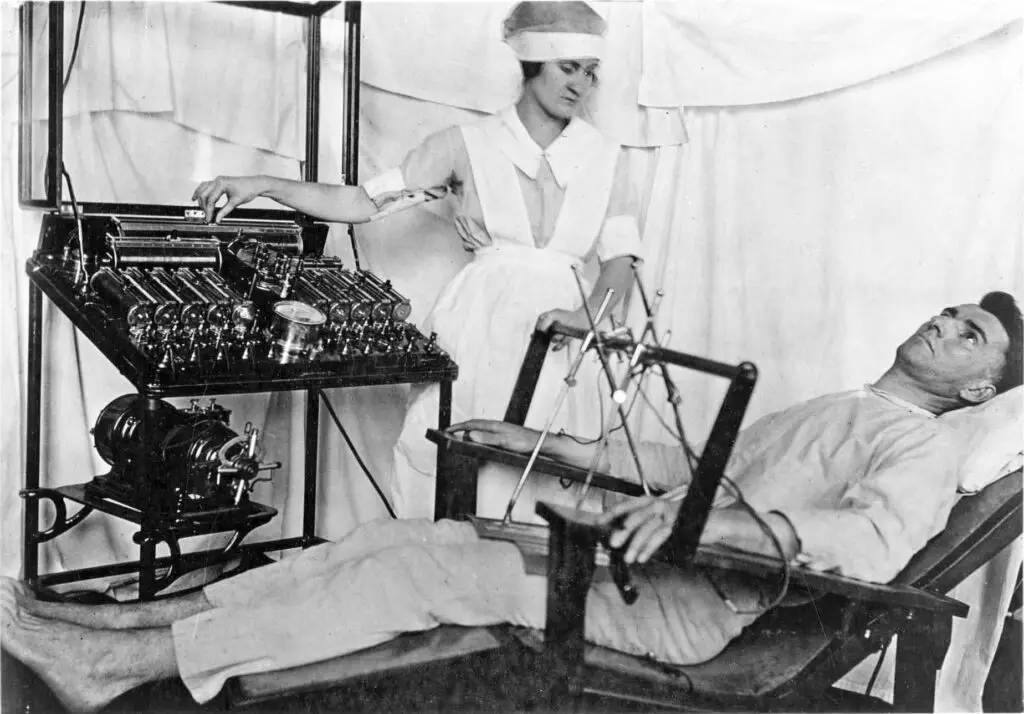
Electroconvulsive therapy (ECT) has been a controversial treatment for mental health disorders, and the devices used in its early days were nothing short of terrifying. In its infancy, the ECT machine was essentially a large, metal contraption with electrodes that would be placed on the patient’s temples to deliver a shock to the brain. These devices often looked like crude torture instruments, with exposed wires and switches that seemed more at home in a horror movie than a hospital.
Patients undergoing electroshock therapy were often given little to no anesthesia, leaving them to experience violent muscle contractions as a result of the electric shock. While the treatment is still used today in controlled settings, the early devices have become a dark symbol of a less empathetic approach to mental health care. It’s hard to imagine such a shocking (pun intended) device being a standard method of treatment in any medical facility today.
3. The Trepanation Tool

Trepanation is the ancient practice of drilling or scraping a hole in the skull, usually to treat head injuries or conditions thought to involve “evil spirits” or “pressure.” The tools used for this procedure were often simple, sharp objects resembling small augers or saws, which left large scars on the skull. While trepanation was once considered a necessary method to relieve pressure or “release demons,” the idea of it today seems nothing short of terrifying.
The procedure was often performed with minimal pain relief, making it even more harrowing. In some cases, patients were fully awake during the operation. While we now know that trepanation didn’t cure much beyond a few rare conditions, it serves as a chilling reminder of how far medical practices have evolved over the centuries.
4. The Dentist’s “Dental Drill” of the 19th Century
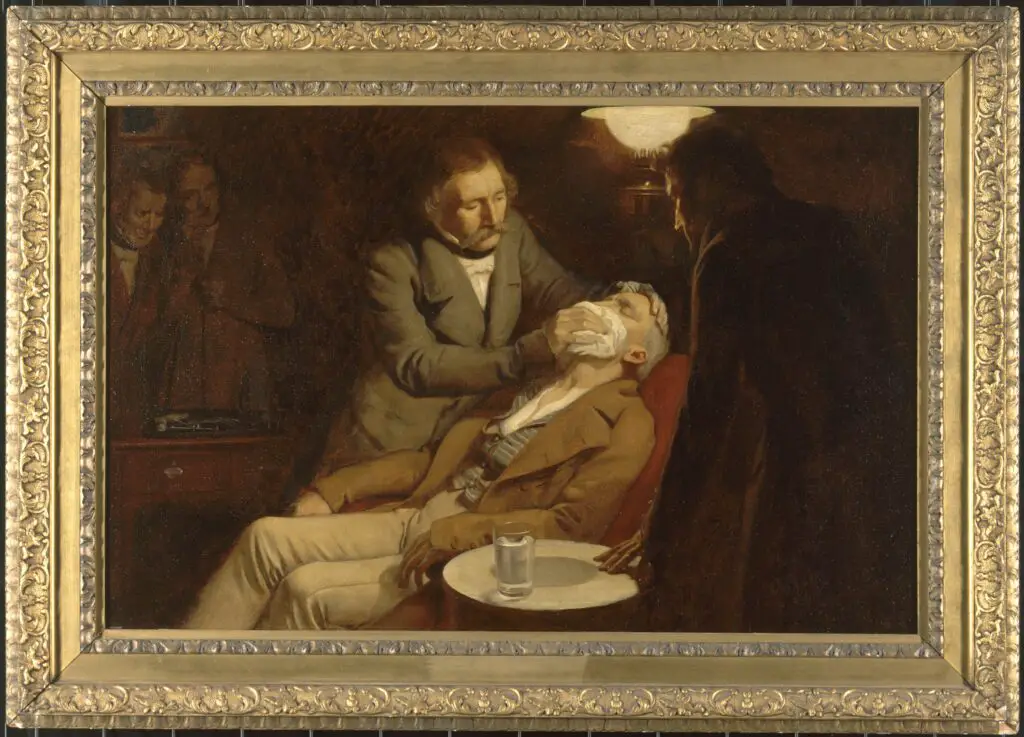
Before modern, high-speed dental drills were invented, dentists used a terrifying, hand-cranked drill to perform dental work. Known as the “odontalgic engine,” it was powered by a pedal or hand crank, and it looked more like a medieval torture device than a tool for caring for your teeth. The drill would often be large and loud, with a sharp, rotating bit that could make even the bravest patient cringe.
This horrifying contraption was used to remove decayed teeth or drill cavities, and many patients likely went through dental procedures in fear of both the pain and the machine itself. The noise of the drill, the grinding sensation, and the fact that there was often no anesthetic made dental visits a truly dreadful experience. Today, the sight of such an apparatus would probably cause anyone to run for the hills.
5. The Bloodletting Device
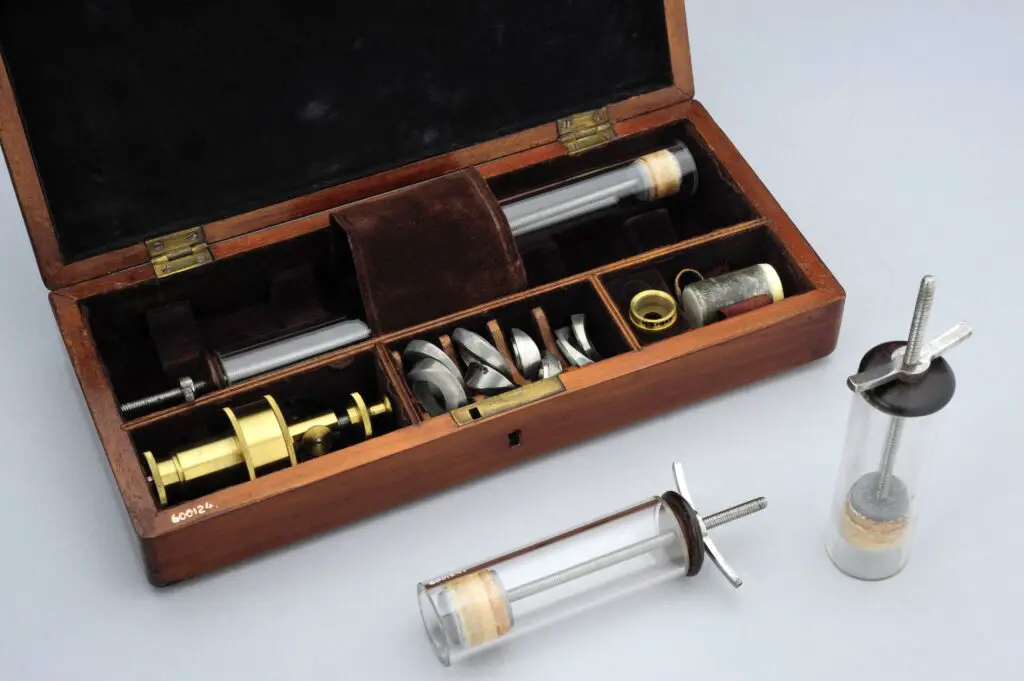
Bloodletting, an ancient medical practice believed to cure illnesses by removing “bad blood,” involved a variety of devices designed to make the process easier. Some of these tools, like the fleam, looked like crude knives or small axes and were used to cut open veins and drain blood. The idea was that draining the blood would balance the body’s humors, an ancient theory of health.
While the practice has long been debunked as dangerous, the instruments used during bloodletting remain horrifying relics of medical history. Fleams, lancets, and other sharp devices were often used by barbers or untrained medical personnel, making the whole process even more terrifying. If you think of today’s sterile, minimally invasive procedures, it’s hard to imagine that people once thought bleeding out could fix everything from a cold to a fever.
6. The X-Ray Shoes
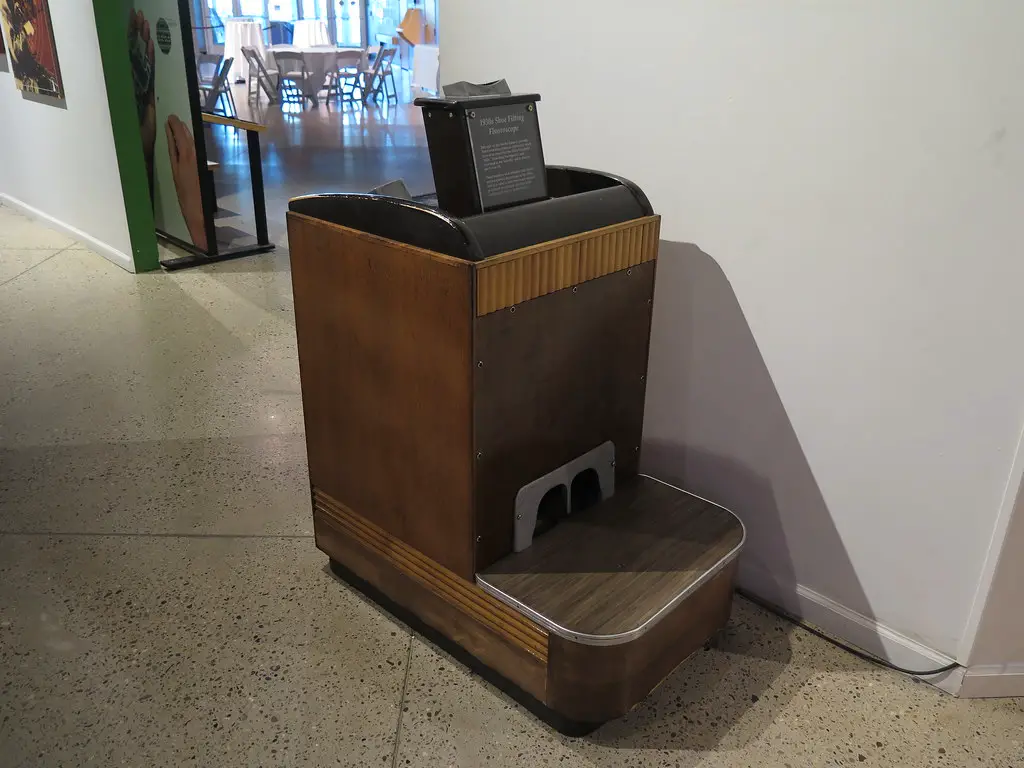
In the early 20th century, X-ray machines were used to check for foot problems, and the technology was incorporated into “X-ray shoes.” These devices allowed people to see the bones of their feet while shopping for shoes. Imagine standing on a glass platform with X-ray vision revealing your bones to the clerk. While it might sound like an innovative idea, it was also incredibly dangerous, as radiation exposure could harm those involved.
The machines were used in shoe stores up until the 1970s, when their harmful effects became known. Despite their initial popularity, the devices were quickly discarded once medical experts understood the serious risks of radiation. In hindsight, the thought of exposing oneself to dangerous levels of radiation for something as mundane as a pair of shoes seems utterly reckless, if not terrifying.
